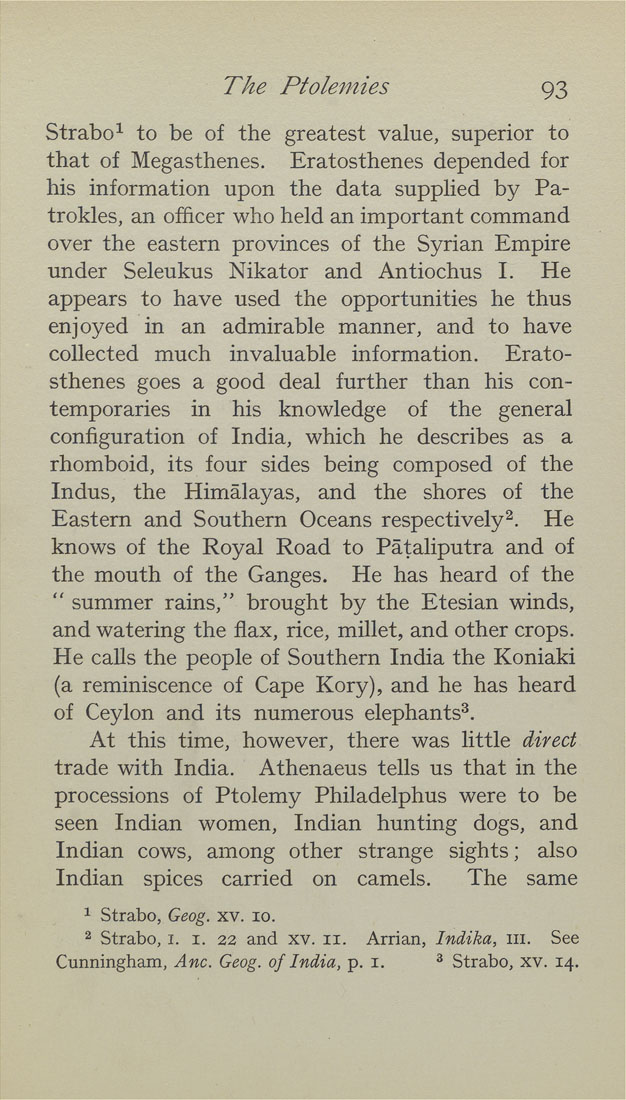The Ptolenues 93
Strabo^ to be of the greatest value, superior to
that of Megasthenes. Eratosthenes depended for
his information upon the data supplied by Pa-
trokles, an officer who held an important command
over the eastern provinces of the Syrian Empire
under Seleukus Nikator and Antiochus I. He
appears to have used the opportunities he thus
enjoyed in an admirable manner, and to have
collected much invaluable information. Erato¬
sthenes goes a good deal further than his con¬
temporaries in his knowledge of the general
configuration of India, which he describes as a
rhomboid, its four sides being composed of the
Indus, the Himalayas, and the shores of the
Eastern and Southern Oceans respectively^. He
knows of the Royal Road to Pataliputra and of
the mouth of the Ganges. He has heard of the
" summer rains," brought by the Etesian winds,
and watering the flax, rice, millet, and other crops.
He calls the people of Southern India the Koniaki
(a reminiscence of Cape Kory), and he has heard
of Ceylon and its numerous elephants^.
At this time, however, there was little direct
trade with India. Athenaeus tells us that in the
processions of Ptolemy Philadelphus were to be
seen Indian women, Indian hunting dogs, and
Indian cows, among other strange sights; also
Indian spices carried on camels. The same
1 Strabo, Geog. xv. lo.
2 Strabo, i. i. 22 and xv. 11. Arrian, Indika, in. See
Cunningham, Anc. Geog. of India, p. i. ^ Strabo, xv. 14.
|








